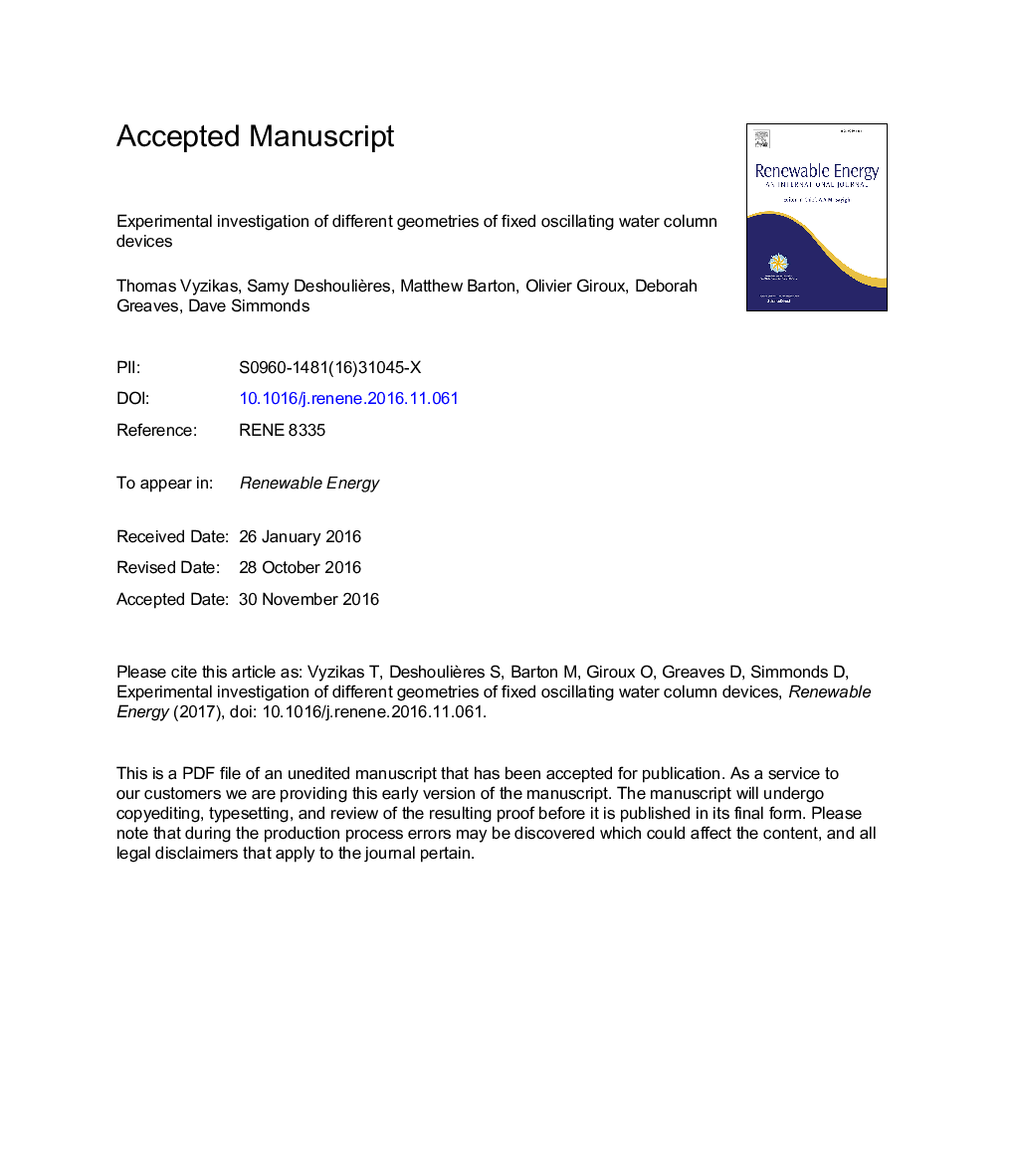| Article ID | Journal | Published Year | Pages | File Type |
|---|---|---|---|---|
| 4926787 | Renewable Energy | 2017 | 36 Pages |
Abstract
Oscillating Water Columns (OWCs) are some of the most-studied wave energy converters (WECs). Previous work showed that the geometric characteristics of the OWC can play a significant role in the efficiency of the device. In this study, we investigate the behaviour of different designs of OWC making geometric modifications to the classic design of OWC and the U-OWC, initially suggested by Boccotti [1]. The multi-chamber OWCs examined here are fixed on the seabed and have a slit opening at the seaward side. The physical modelling was undertaken in the flume of the COAST laboratory of the University of Plymouth. The devices were tested in uni-directional regular and irregular wave conditions, with and without power take-off (PTO) mechanism, essentially also testing absorbing seawalls. The aim of the study is to present a preliminary comparison related to the geometry of OWCs under some typical wave conditions and suggest potential shape improvements towards an overall optimization of the devices that takes into account both the hydrodynamic efficiency of the OWC and other design aspects, such as the wave run-up. The present study also endeavours to highlight potential benefits from incorporating OWCs in coastal defence as absorbing seawalls.
Related Topics
Physical Sciences and Engineering
Energy
Renewable Energy, Sustainability and the Environment
Authors
Thomas Vyzikas, Samy Deshoulières, Matthew Barton, Olivier Giroux, Deborah Greaves, Dave Simmonds,
